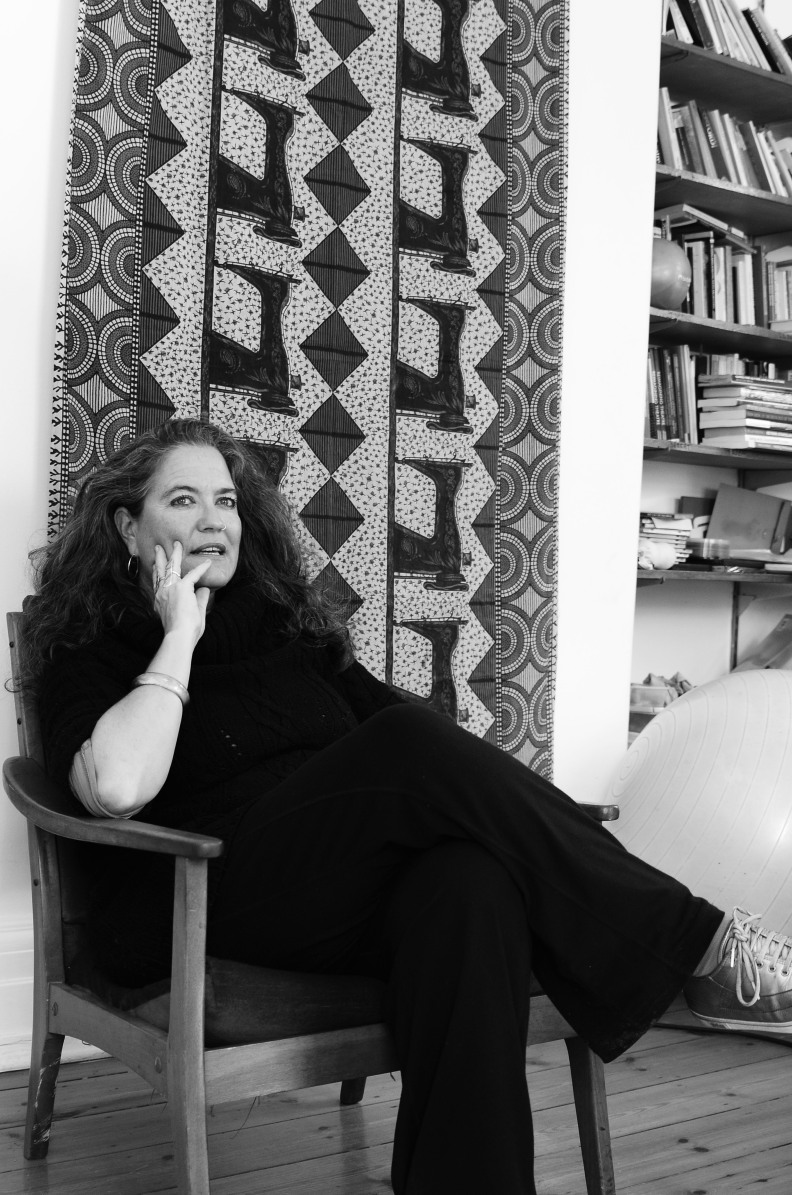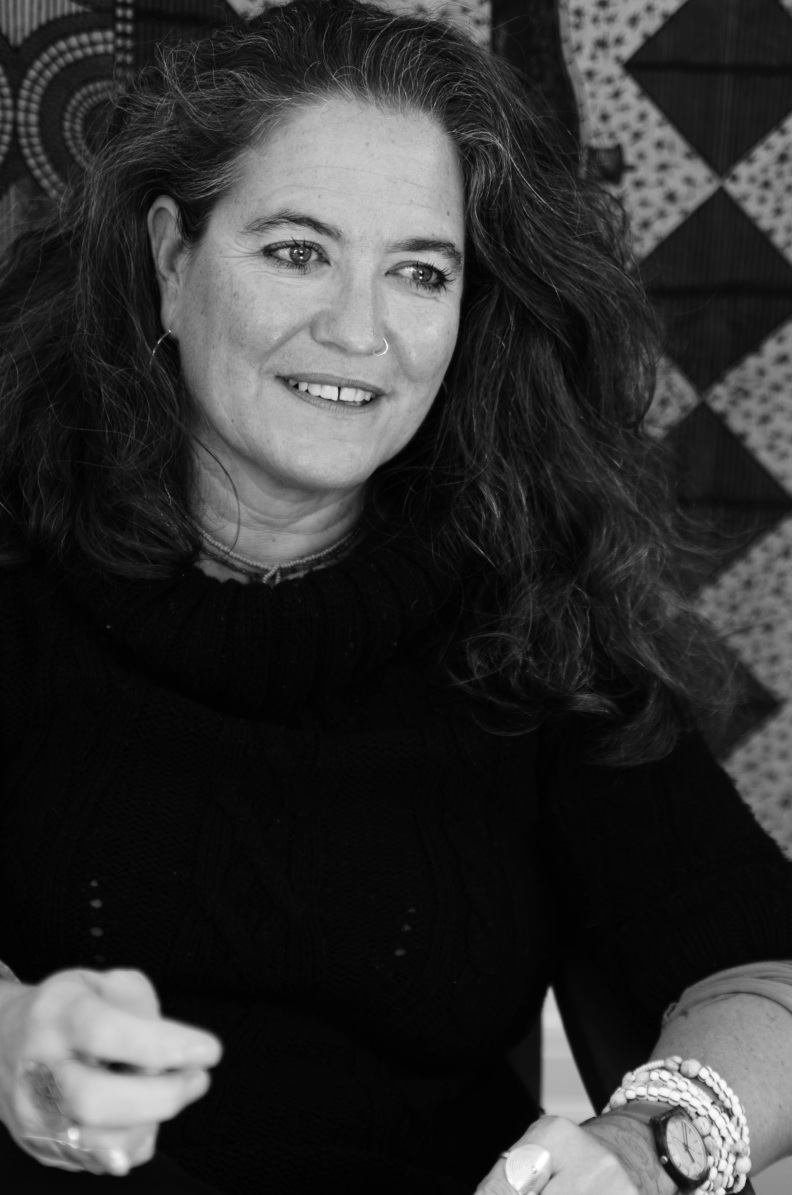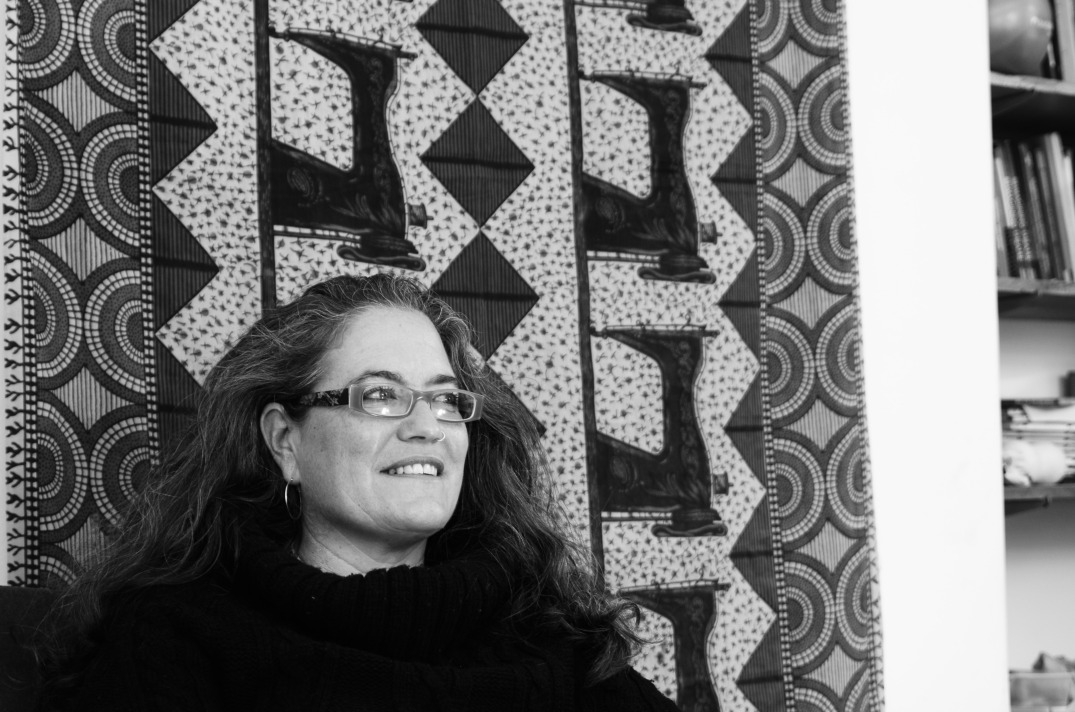Sara Matchett is a director, theatre-maker and lecturer. She holds a PhD in Theatre and Performance from the University of Cape Town where she currently resides as a senior lecturer in the Department of Drama. As co-founder and Artistic Director of The MotherTongue Project, a women’s arts collective, Sara has experience in the field of theatre in South Africa, Singapore, India, Kenya and Indonesia as a theatre-maker, performer, director and facilitator. Her latest directorial endeavor, Womb of Fire, which reunites her with her “soul collaborator” and fellow MotherTongue Project co-founder, Rehane Abrahams, is now playing at the Baxter Theatre. Who or what inspired you to pursue a career in the arts?
My mother actually inspired me. When I was 14, my mother took me to see a production of Agnes of God with Lena Ferugia. I think Fiona Ramsay was in it. I was completely moved. I was touched. It made a huge impact on me to the point of obsessing about this thing and about the actors. At some point, I said to my mother, “Can I study this thing?” She had studied Fine Art at Michaelis and she said, “Yes. Are you prepared to sit on doorsteps?” I said, “Yes!” Prior to that, I wanted to be a vet and a sheep farmer. At 14, that experience shifted my life. I then started doing extramural Drama with Rita Maas. That was it. I didn’t ever go back to becoming a vet or a sheep farmer after that.

You did most of your training at UCT and eventually went on to join the faculty. What was it like to come back and teach at the institution that you trained at?
I suppose it’s important to say that I finished in 1990 and then I went off for four or five years, did my honours and then I went off for another nine years but taught intermittently. I did my masters and then I got a job at Wits. It was very good to move away. It gave me the space to develop my own courses [and] to find my signature. Then I came back. I was offered a post here. I didn’t want to leave Johannesburg but Yvonne Banning was a big mentor of mine. She wrote my reference letter for Wits and she mentioned that although she felt it was a good move for me, she was hoping I would take over from her and I knew that this post was her post, on paper. Something in me just said, “You’ve got to go back to Cape Town and pick up the baton.” I think that has happened to a large extent. If I think about the role that Yvonne played in this institution when I was a student, I think I fulfil a similar role, it seems. How was it? Very difficult. When I was teaching here as a student, it was great but I went away and I came back and nobody knew who I was. Not only did I fill Yvonne’s post but I was also teaching voice so I had big shoes to fill. Liz Mills was another mentor. The students resisted me. They are funny like that. I think they felt betrayed to a certain extent but I sat it out and after five years I started to find I allowed my signature to find its place in this space. I think finally, eight years later, I feel really comfortable being back here and teaching and being able to deal with some things that I felt challenging as a student in terms of actor training and to find alternative ways of teaching those.

What was the process like in creating Womb of Fire?
When Rehane [Abrahams] returned from her travels in 2014, we spoke about making a new work. We travelled to Kalakshetra in Manipur, which is the North East of India, together and we saw their work, Mahasweta Devi’s version of Draupadi, and again we said, “We need to make a new work.” That production, that performance reinspired that conversation. When I was doing my PhD research, Rehane was one of my research participants. The PhD is an exploration of the body as a site for generating images as a starting point for performance-making and it draws from a voice practice called Fitzmaurice voicework which is the core of the work. Rehane, particularly, had really interesting images and I said to her, “We’ve got to do this. Let’s make this work now.” We decided to apply to NAF and that’s when we put our ideas together. She had been thinking about Zara and Groote Catrijn and her mother-line and because my PhD stopped at the point of generating images and didn’t make a work, I was thinking about how I could take it further and follow it through to make a work. I felt we needed a myth to contain the archival narratives and we went back to our experience in Manipur and we felt that Mahasweta Devi’s version would be appropriate. In February, we started working. We had the three narratives and we started the process that the PhD proposes and a whole lot of material was generated and Rehane went and transcribed that. A lot of the text comes directly from those transcriptions, so the more tangential text came from that and served to weave the narratives together and of course her personal narrative was also woven into that. We worked for two weeks, she went away [and] wrote. She only ever wrote one draft. She had the archival narrative and the myth but she was saying how the process of writing was quite effortless. Then we came back and put it on the floor. The other drafts have been about cutting some things but we haven’t changed it much. She often changes things in performance and then it’s like, “Oh, keep that. That’s fantastic.” Then Jason Jacobs translated Zara, one of the characters, for the Woordfees festival and that added an interesting layer. For this run, some of that text makes its way into the original text as well. It’s kind of this layered, quite interesting thing that seems to be emerging and in a constant state of emergence. It feels like it is something that will keep growing and developing even though, as I said, the first draft is pretty much there and hasn’t changed that much. It was a process that was characterised by flow and at some point it felt like we needed to step aside and let these characters do their thing and tell their story.
This was a creative process that reunited you and Rehane after several years. What was it like to come together and create again?
It was fantastic. I had been to visit Rehane in Bali [and] she had come back. She, in fact, operated sound for a production I did in Grahamstown because she was here. She remained part of MotherTongue. She is a board director of MotherTongue, a co-founder and even when she was away she remained as such. It was like coming home working with her. There is an ease and a flow in the way that we work. When I say we get each other, we really get each other. Often what happens with Rehane, and I think it’s a rare gift as a director, as I’m about to suggest something, she does it before I say it. It feels like we are communicating on another level. We were students together. We’ve known each other since she was 17 and I was 18. We grew up together. There is a synergy that is hard to describe. I refer to her as my soul collaborator, my creative partner in life. It was seamless and coming home.

I’d love to hear more about your experience forming MotherTongue.
It came out of the first production we did, What the Water Gave Me. The production made quite an impact, I think, on audience members. People were saying to us, “Are you going to make more work?” We decided to continue and we registered the organisation. In 2003 we finally registered as a not-for-profit company and we were joined by a feminist activist theatre-maker from Kenya by the name of Awino Okech and we started working in different communities in Cape Town. The first project we did was with young women in Manenberg. It was a project that explored rite of passage and it was an exchange with an organisation in Kenya, and in Kenya the community that we worked with, practised female genital mutilation. In Manenberg, although there were no formal rites of passage for young women, what we discovered was that there were informal rites of passage. Then we did another project in Khayelitsha which explored the intersection between HIV and gender violence. What started to emerge was that there was more community-based applied theatre, for want of a better word, an applied theatre stream that was developing. Rehane left soon after What The Water Gave Me performed at the Baxter. Then we went on to perform Beading My Soul with Faniswa Yisa and Andrea Dondolo, and Indawo Yamaphupha and Uhambo- Pieces of a Dream, so we had a whole set of more mainstream performances, so these two streams started to emerge. That is kind of how its been for the past 15 years. The more mainstream production side of things has kind of taken a bit of a rest while I was writing my PhD. I invited people to come in and direct and do something but it didn’t happen. I’m hoping that will happen and perhaps Rehane directs the next piece. That needs to start happening. It feels like I handed in my PhD in 2015 and we started conceptualizing this.
According to the website, it says that MotherTongue is the first all-female collective in South Africa…
One of the first. I think it is. One of the first that formalised ourselves.
Were you met with any obstacles?
Not really, apart from the odd comment from my male colleagues and theatre practitioners like, “We are going to form FatherTongue!” We haven’t been met with… certainly not any blatant aversion. It’s interesting, there’s a PhD student from Brown University who has just written a thesis and she looked at the work of Sistren, a theatre collective in Jamaica and draws a parallel between MotherTongue and Sistren. Internally, we started with a flat structure where everybody had equal say and there were seven of us. It didn’t work. We had to somehow, and reluctantly, introduce some form of structural hierarchy which is still there although we have three directors, and apparently Sistren had the same problem. I haven’t read the thesis yet. Internally we had to figure out structuring ourselves but no, we were not met with much criticism. Not that I know of.

How has your work with MotherTongue fed into your practice, teaching and directing?
A lot. On multiple levels, the lessons that I learned on working with Rehane, for instance, has informed so much of what I teach and how I teach. MotherTongue took Faniswa and myself to India in 2002. While there, we engaged in an acting system that is over 2 000 years old that explores the triadic relationship between breath, posture and face as a way of accessing emotions. I’m about to teach a Rasa class now and it’s a kind of psycho-physical way into performance which bypasses emotional recall and accesses a cellular memory and works with felt-perception. It’s key to my work. It’s key to Rehane’s performance as well. MotherTongue took me there. The work that we do in the Langeberg, the office is actually based in McGregor and we have a company of six young people. Some of them were previously unemployed and now they are employed as actors or facilitators. Students in their second year, their second-semester course is called Learning Through Drama and Theatre, spend a week in their September vacation working with the company and it forms part of their learning experience. It’s usually quite a pivotal experience for them. A lot of them shift their perceptions on what it is they are doing and what they would like to do once they leave here. I think there are multiple ways that it’s woven in and out of my teaching practice. Working with those six young people has been an extraordinary experience as well, and for them to come and see Womb of Fire was a huge experience. I’m thinking that Rehane needs to go and direct a piece of work with them around their stories.

In addition to everything that you do, you also have quite an interesting performance career. Is that something that you try to carve out time for or do you only step back onto the stage when you find the right story?
I rarely perform. I performed in Indawo Yamaphupha- The Space of Dreams in 2002 because I was dealing with the loss of my sister. She died of cancer in 1995 and I needed to find a way of reintegrating that loss back into my cellular structure without falling apart. For two weeks or whatever it was, I performed that story and it was almost like I was able to speak about her death for the first time without falling apart. I had to do that and then I didn’t perform again until Walk and that again came out of a compulsion around the need to do something around the high levels of violence against women and rape culture in South Africa. Those are two kinds of isolated experiences and now Walk is going to Grahamstown. That was also interesting for me because I was exploring what I teach, because I’m primarily a voice teacher, a breath and sonic text. I’m very inspired by performers like Diamanda Galás and Meredith Monk and Laurie Anderson, to some extent. It’s been fantastic to have that space. I don’t know if I’ll perform again. Rehane keeps saying, “I need to direct you now.” But we’ll see about that. It’s quite nice to come back to performance later in your life when you can put the ego aside. There is something quite rewarding. Again, it feels like coming home.
I saw Womb Of Fire with my friend Sarah Potter, who is one of your former students. I asked her if she’d like me to ask you anything and she asked me to ask you: “What is the core belief that drives you and gives you so much energy? She is a powerhouse.”
She knows what the core energy is that drives me. That’s why she’s asking the question. It’s a big question. I don’t know how to put this. I’ve recently, and perhaps Sarah doesn’t know this, done a lot of work around shamanic work and ancestral work. That connection with my grandmother, if I were to put it into a nutshell, Violet Hebee Matchett, is something that keeps coming up. In 2009, I stupidly jumped up and got something out of the cupboard and broke my fifth metatarsal on my right foot on the 8th of March. I didn’t think much of it. On the 8th of March in 2011, I walked out of the door to come to work, tripped and broke the left fifth metatarsal. I was working with a healer in Johannesburg at the time and I phoned her and I said, “What is this?” And she said, “You need to find out who was born or who died on this day.”I called my mom and she said, “Your grandmother was born on this day.” This woman said, “She is waking you up. What are you not doing?” So I made another work which I performed for my Fitzmaurice teacher’s exam and I performed it in Canada. I never performed it here but it was really about saying, “Ok, I hear you. I will be your channel.” It’s not just my grandmother but I’m using that example. I’m aware of a lineage and I’m aware of those who have come before me and I’m aware [that] whatever I am doing now, has the ability to perhaps transform the experiences of those who have come before me and those who will follow me. I sit in the middle so it’s alchemical. I think what drives me is a deep trust in the work that we do and its alchemical nature.
Thank you for answering that.
It’s a hard one because I don’t want to say, “It’s a spiritual underpinning.” It’s not that. And breath, I am passionate about breath. I did a whole PhD on breath, really. That was what my hypothesis was eventually, that breath is the catalyst. Breath informs everything.

Who are some South African women in the arts that inspire you?
There are a lot. Yvonne Banning. Gcina Mhlophe, Warona Seane, my colleagues, Faniswa Yisa who was a student of mine. Chuma Sopotela, Rehane and then my contemporaries and younger than me, continue to inspire me. I could go on. There are many. And my students, my young women students. They really do.
Womb of Fire is now playing at the Baxter Theatre until May 5th. For tickets, click here.
Special thanks to Jade Adams, Fahiem Stellenboom, Sara Matchett and Candice van Litsenborgh.
All photos were taken by Candice van Litsenborgh at UCT on April 20th 2018.
Sarafina Magazine and Candice van Litsenborgh maintain copyright over all images. For usage or inquiries, please click here.

Pingback: A Conversation with Qondiswa James – Sarafina Magazine
Pingback: A Conversation with Faniswa Yisa – Sarafina Magazine
Pingback: A Conversation with Jill Levenberg – Sarafina Magazine
Pingback: A Conversation with Lukhanyiso Skosana – Sarafina Magazine
Pingback: A Conversation with Ann Juries-May – Sarafina Magazine